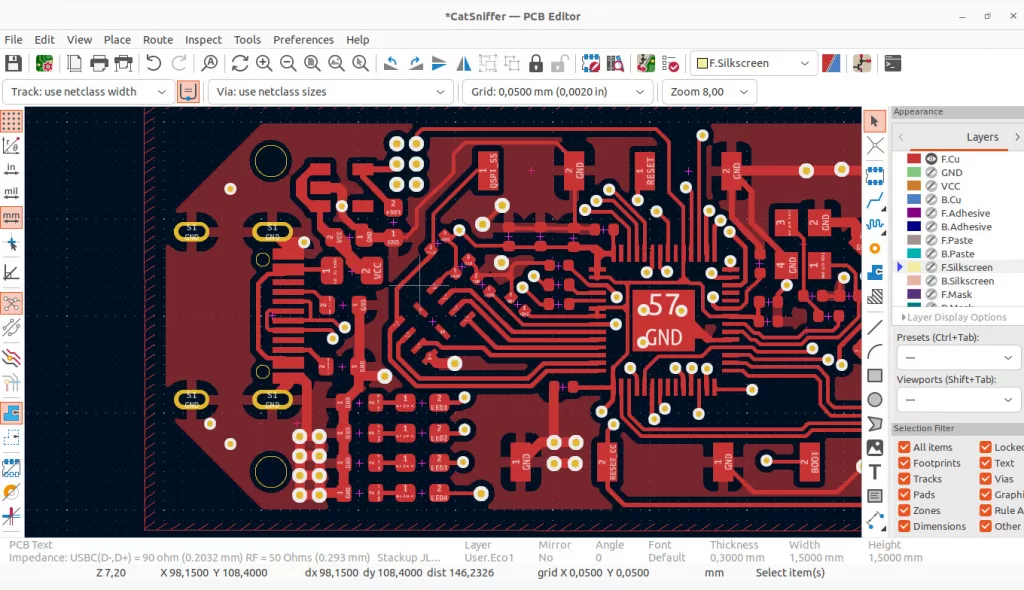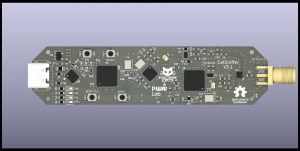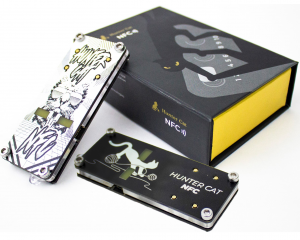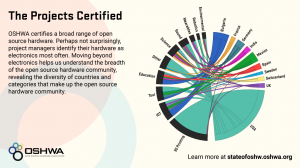[vc_row][vc_column][vc_single_image source=”featured_image” img_size=”full”][vc_column_text]In this exploration of Computer-Aided Design (CAD), we focus specifically on KiCad.
Before we dive into the details of KiCad, it’s important to note my view of this tool as exceptionally well-developed with a promising future. However, to fully appreciate KiCad, we must first understand what OSHWA (Open Source Hardware Association) is. OSHWA is dedicated to promoting and certifying open-source hardware.
The term “open source” here means that the design and documentation of hardware are publicly available, allowing others to use, modify, and freely share them. Recognizing the significance of OSHWA adds valuable context to using tools like KiCad in design.
This is not only reshaping the industry of electronic design but also lowering investment barriers in product development. This powerful collaboration underscores the transformative impact of the open-source philosophy.
Open Source Hardware: Lowering Investment Barriers
The Open Source Hardware Association (OSHWA) is transforming the tech landscape. By promoting open-source hardware, they’re making it easier and more affordable to develop new products. This approach drastically reduces the cost and barriers to entry for product development. For detailed insights, visit OSHWA’s Website and check out their 2021 Open Hardware Report.
KiCad: A Key Player in Open-Source Design
KiCad, leading the way in open-source design tools, has seen significant growth. It has revolutionized the way PCBs are designed, offering speed, quality, and 3D visualization capabilities. You can download KiCad from its Official Website.
Personal Insights on Using KiCad vs. Paid Tools
As someone who often uses professionally paid tools for creating schematics and footprints, I appreciate their speed and efficiency. A feature I particularly like in paid tools is the dynamic bill of materials (BOM) that links with suppliers like Digikey and Mouser. This function makes life easier by assigning part numbers to components and comparing stock availability. It’s something I miss in KiCad, but it’s not a deal-breaker.
Despite this, KiCad impresses with its extensive library. Websites like SnapEDA offer a vast range of libraries for KiCad, ensuring that working swiftly is not an issue.
Routing Made Easy with KiCad

When it comes to routing, KiCad makes the process straightforward. Understanding IPC standards is crucial, regardless of the CAD software you use. I’ve completed a four-layer design in KiCad without any problems. A feature of KiCad that stands out is its impedance calculator, an excellent tool for designing high-speed lines.
In my exploration with KiCad, I’ve found it to be a robust and versatile tool, especially when supplemented with external libraries like those from SnapEDA. Its impedance calculator and ease of routing make it a strong contender against paid professional tools, offering a balance of efficiency and accessibility for a wide range of design tasks
Showcasing KiCad’s Capabilities through Projects
- CatSniffer by ElectronicCats: A versatile tool for IoT security, the CatSniffer incorporates advanced technology and is compatible with various software, supporting technologies like LoRa. See the CatSniffer:

- Hunter Cat NFC: This tool specializes in NFC security, suitable for access control and banking card applications. It identifies and trackc NFC readers. More information is available at: Hunter Cat NFC GitHub.

The Advantages of KiCad
KiCad excels in providing detailed 3D representations of PCBs and precise impedance control. Its versatility across different platforms sets it apart from many other design tools. This adaptability is crucial for designers seeking flexibility and efficiency.
Concluding Thoughts
Open-source hardware, facilitated by tools like KiCad, not only simplifies the replication or repair of boards but also plays a significant role in democratizing technology development. You can find some of these open hardware boards for sale at Tindie. KiCad’s widespread use in these designs is a testament to its capability and popularity. It’s worth considering KiCad for your next project.[/vc_column_text][/vc_column][/vc_row][vc_row][vc_column][/vc_column][/vc_row]



